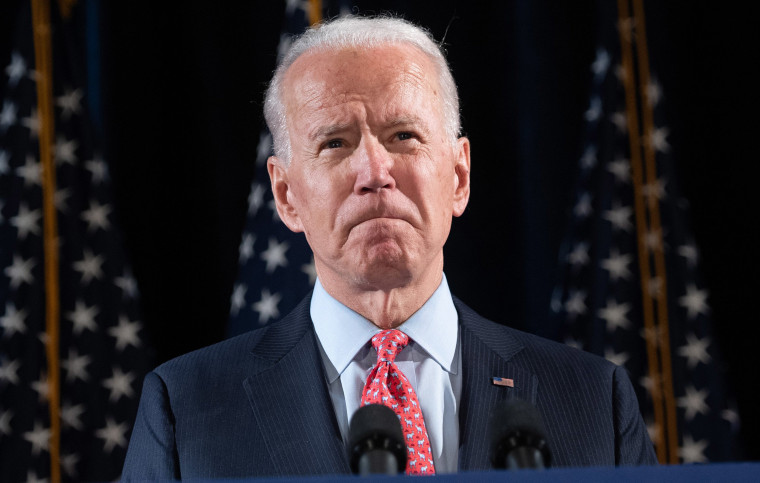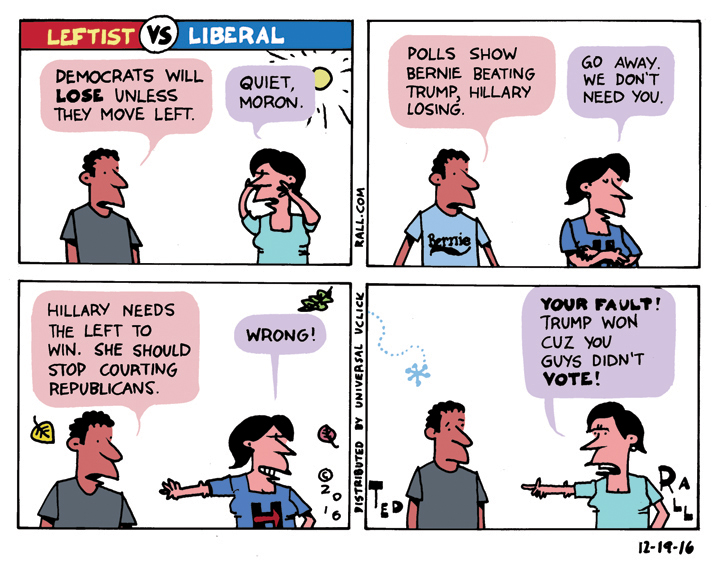The corporate conservatives who control the Democratic Party are suffering from cheaters’ remorse.
The DNC and their media allies (NPR, CNN, MSNBC, New York Times, Atlantic Monthly, Vox, etc.) subverted the will of primary voters, undermining initial frontrunner Bernie Sanders in order to install the worst candidate of the 20 centrists in the campaign.
Now the power brokers are worried that the befuddled Biden, whom they touted as the Most Electable Against Donald Trump, will lose to him. Rather than take responsibility for their idiocy and force Biden to pull out of a race for which he is obviously physically and mentally unprepared, the corporatist sellouts are preemptively blaming the progressives who warned them about this exact scenario.
Sorry, right wingers. Biden is on you. You made him the presumptive nominee. If Trump wins again, it’s your fault.
Just as it was last time.
Establishment panic over Biden is most palpable in the pages of the official party organ of the Democratic Party, the Times. “While [Biden] has held consistent leads in most national and swing-state polls, they have not been altogether comfortable ones,” the paper noted on May 15th.
If Biden is to squeak by Trump in November, he requires a comfortable lead now. “A CNN poll released on Wednesday found Mr. Biden leading the president by five percentage points nationwide, but trailing by seven points among voters in crucial battleground states…for some Democrats, the results of the CNN poll again raised the specter that Mr. Biden could win the popular vote but lose the Electoral College, as Hillary Clinton and Al Gore both did.”
Historically, in May of a presidential election year Democrats need a lead of at least 10 points over their Republican rival in order to prevail in a general election. Republicans always close the gap during the last six months of a presidential race.
The Times is pushing Biden’s candidacy via two lines of argument. First, lesser-evilism. As columnist Frank Bruni wrote May 17th, he’ll “take Biden’s confusion over Trump’s corruption.” (Of course Biden is corrupt too.) Second, they claim, Biden should be acceptable. He isn’t Hillary Clinton. Due to the coronavirus crisis, Bidenites say, their man is willing to pivot to the left. (Never mind that progressive programs need to be in place before a crisis, not ramping up a year after it begins.)
The second argument is the easiest to shoot down. Biden has a decades-long track record of voting and governing to the right, including voting to invade Iraq for no good reason. Even now, as tens of millions of Americans lose their jobs and thus their health insurance, Biden refuses to join the rest of the industrialized world by endorsing single-payer healthcare. Progressives don’t trust Biden. They trust history. History proves Biden isn’t one of them.
Bruni’s argument involves magical thinking too. “At the end of the day, Biden can be trusted to do what Trump didn’t and won’t: stock his administration with qualified professionals. He could compensate for any supposed cognitive deficit with a surplus of talent,” Bruni says. There is no evidence, none, zero, zip, that this is true. Biden could validate that argument by announcing his cabinet nominations now. But he’s not.
Biden leaves progressive voters cold. That matters because the enthusiasm gap could decide the election. “Trump had a consistent edge over Hillary Clinton in enthusiasm [in 2016],” reported CNN’s Harry Enten. “His voters were 4 points more likely to say they were very enthusiastic in voting for him than Clinton’s were for her in the final ABC News/Washington Post poll, even as Clinton led overall. That enthusiasm advantage should have been one of the warning signals to the Clinton campaign. Trump’s current edge in enthusiasm over Biden is even larger. In a late March ABC News/Washington Post poll, 53% of Trump backers said they were very enthusiastic about voting for him. Just 24% of Biden backers said the same about their guy.”
If anything, the enthusiasm gap might widen as billions of dollars of stimulus payment letters bearing Trump’s signature hit voters’ bank accounts and he wraps himself in the trappings of the presidency while Biden sits in his basement trying to figure out how to use his computer camera. If I were Trump, I’d be planning my second term.
Let’s not forget how we got here.
When Bernie Sanders announced he was running again, Democratic-aligned media outlets said he was too old. “Mr. Sanders would be 79 when he assumed office, and after an October heart attack, his health is a serious concern,” the Times said in its absurd editorial joint endorsement of Amy Klobuchar and Elizabeth Warren.
Then, when Bernie emerged as frontrunner for the nomination, corporate media presented him as an existential threat. Head-to-head polls showed he was at least as electable as his rivals, yet “journalistic” organizations stated, without evidence, that a left-wing Democrat couldn’t beat Trump. Headlines proliferated:
“Bernie Sanders Can Still Be Stopped.”
“The Stop Sanders Movement Has Gone Public.”
CNN even compared Sanders to the coronavirus.
Remember all those “Can Obama Be Stopped?” headlines from the 2008 primaries. Me neither. When it came to Bernie, pseudo-liberal media didn’t pretend to be objective.
The DNC went after him like crazy.
Bernie Sanders won the key Iowa caucus but Democratic vote-counting chicanery cheated him out of the PR for his win. Party insiders believe that Barack Obama personally arranged for Beto O’Rourke, Amy Klobuchar and Pete Buttigieg to endorse Joe Biden the day before Super Tuesday. Speaking of which, Sanders won California, the biggest state—but the vote count mysteriously took days, denying him a big headline and an accurately optimistic delegate count in media coverage.
They’re still at it. At this writing party leaders are trying to prevent an embarrassing protest vote against Joe Biden in New York by fighting in court for the right to delete Bernie Sanders from the state’s mail-in primary ballots.
A Times headline from February 20th proved prescient: “Democratic Leaders Willing to Risk Party Damage to Stop Bernie Sanders.”
They got what they wanted.
(Ted Rall (Twitter: @tedrall), the political cartoonist, columnist and graphic novelist, is the author of the biography “Bernie,” updated and expanded for 2020. You can support Ted’s hard-hitting political cartoons and columns and see his work first by sponsoring his work on Patreon.)


